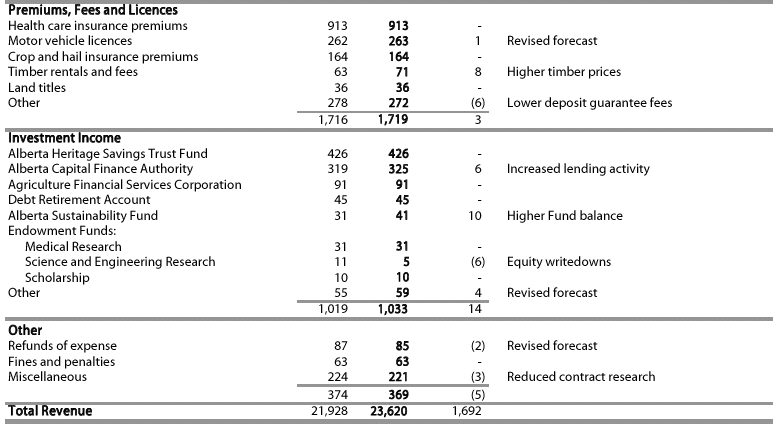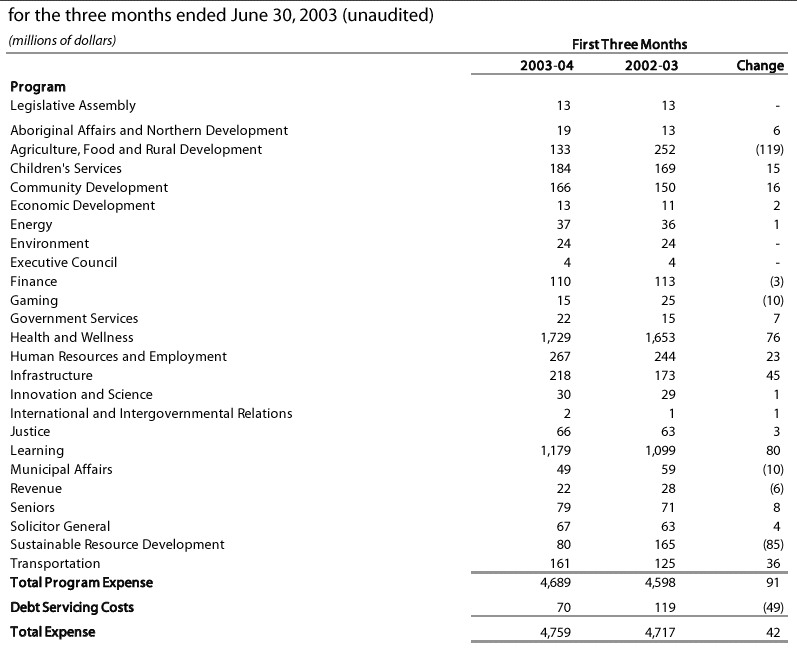|
|
Released: August 27, 2003
If you would prefer to download
this file in pdf format, click here.
Please note: Blank pages in pdf
files are deliberately placed for ease of double-sided printing.
UPDATING ALBERTANS
The First Quarter Fiscal Update is comprised of two parts – the updated 2003-04 forecast and the actual results for the first three months of the fiscal year (April 1 to June 30, 2003).
TABLE OF CONTENTS
- Highlights
- Revenue
- Expense
- Alberta Sustainability Fund
- Capital Plan
- Net Financial and Capital Assets
- Assets, Liabilities and Net Assets
- Net Financing Requirements
- Fiscal Year Assumptions
2003-04 Forecast
Highlights
-
Total revenue is $1.7 billion higher than estimated in the budget. The increase primarily reflects higher non-renewable resource revenue.
-
Total expense is $580 million higher than budgeted. The increase is primarily due to agriculture and forest-fire disaster and emergency assistance. Partly offsetting these increases are lower debt servicing costs.
-
Net Revenue (revenue minus expense, prior to Sustainability Fund and Capital Account transfers) is forecast at $2.2 billion. This is $1.1 billion higher than estimated in the budget.
-
Funding for agriculture and forest-fire disaster and emergency assistance has been provided through the Alberta Sustainability Fund. Funding for other in-year spending initiatives has been provided from the $210 million Contingency Allowance set aside in the budget. $98 million remains unallocated in the Contingency Allowance.
-
The net assets of the Sustainability Fund are forecast to reach $3.4 billion by March 31, 2004. The net transfer from 2003-04 operations is forecast at $2.5 billion. Approximately $900 million in cash is also being transferred to the Sustainability Fund, primarily reflecting cash from natural gas royalties accrued in 2002-03.
- The Sustainability Fund was established to help protect budgets from volatile revenue and the costs of emergencies and disasters. The Fund is the first priority for year-end surpluses until it reaches $2.5 billion. The government will consider, later in the fiscal year, the potential reallocation of dollars above the $2.5 billion target to other balance sheet improvements.













